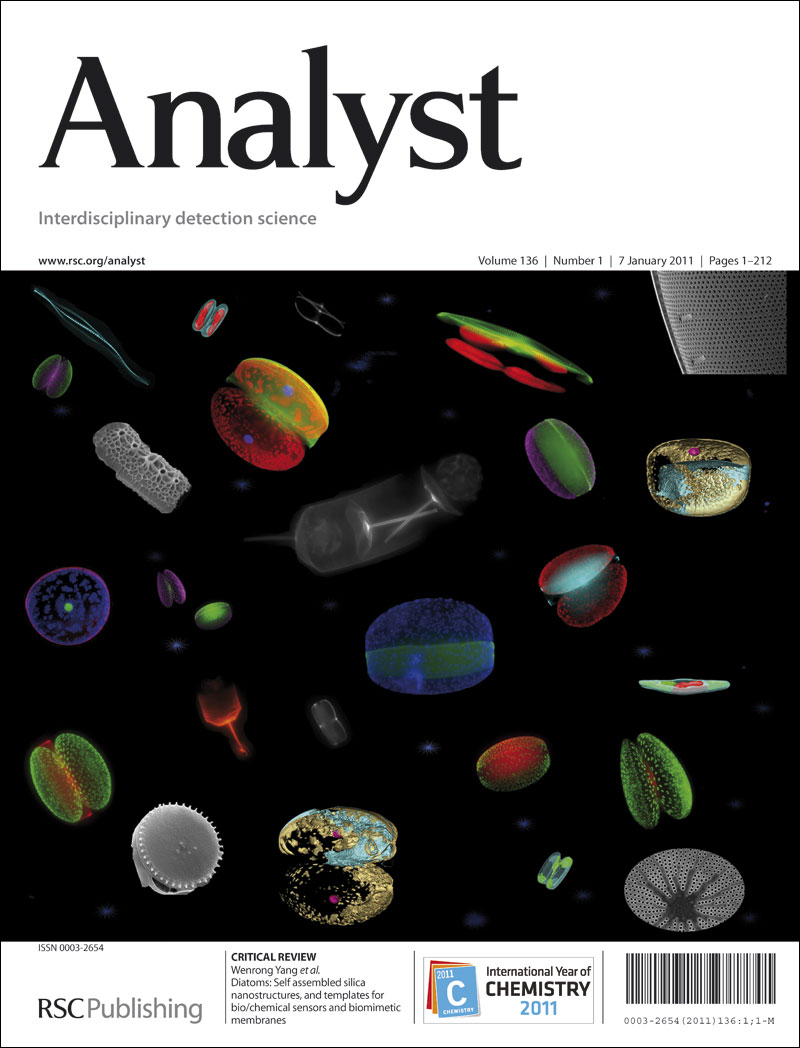Sensing biothiols via thiol-chromene addition triggered fluorophore activation by intramolecular cyclization
IF 3.3
3区 化学
Q2 CHEMISTRY, ANALYTICAL
引用次数: 0
Abstract
Biological thiols constitute a vital class of redox regulators essential for maintaining intracellular homeostasis. Herein, we engineered three innovative fluorescent probes (CCZU series) through a rational molecular design strategy combining thiol-chromene addition and intramolecular cyclization mechanisms for sensing biothiols. These probes feature tunable electron-withdrawing groups that enable selective recognition of biothiols via a cascade reaction process: initial Michael addition of thiols to the α,β-unsaturated ketone moiety triggers chromene ring-opening, followed by spontaneous intramolecular cyclization to yield highly fluorescent coumarin derivatives. Systematic probe evaluation identified CCZU-3 as an optimal candidate, demonstrating superior water solubility, rapid response time (~5 min), and remarkable fluorescence amplification (>180-fold) with nanomolar sensitivity. The probe's biological utility was validated through fluorescence imaging of biothiols in live cells and zebrafish. Significantly, CCZU-3 enabled fluorescent analysis of altered thiol content associated with redox imbalance in a diabetic cell models. This work establishes a novel sensing platform offering promising applications in disease diagnosis and redox-targeted therapeutic development.通过巯基铬的加入感应生物硫醇,通过分子内环化触发荧光团激活
生物硫醇是维持细胞内稳态所必需的一类重要的氧化还原调节剂。本文通过合理的分子设计策略,结合巯基铬加成和分子内环化机制,设计了三种创新的荧光探针(CCZU系列),用于检测生物硫醇。这些探针具有可调的吸电子基团,能够通过级联反应过程选择性识别生物硫醇:最初的Michael将硫醇添加到α,β-不饱和酮部分触发铬烯开环,随后是自发的分子内环化,产生高荧光香豆素衍生物。系统探针评价确定CCZU-3为最佳候选,具有优异的水溶性,快速的响应时间(~5 min),显著的荧光扩增(>;180倍)和纳摩尔灵敏度。通过对活细胞和斑马鱼中的生物硫醇进行荧光成像,验证了探针的生物学效用。值得注意的是,CCZU-3能够荧光分析糖尿病细胞模型中与氧化还原失衡相关的硫醇含量改变。这项工作建立了一个新的传感平台,在疾病诊断和氧化还原靶向治疗开发中提供了有前途的应用。
本文章由计算机程序翻译,如有差异,请以英文原文为准。
求助全文
约1分钟内获得全文
求助全文
来源期刊

Analyst
化学-分析化学
CiteScore
7.80
自引率
4.80%
发文量
636
审稿时长
1.9 months
期刊介绍:
"Analyst" journal is the home of premier fundamental discoveries, inventions and applications in the analytical and bioanalytical sciences.
 求助内容:
求助内容: 应助结果提醒方式:
应助结果提醒方式:


